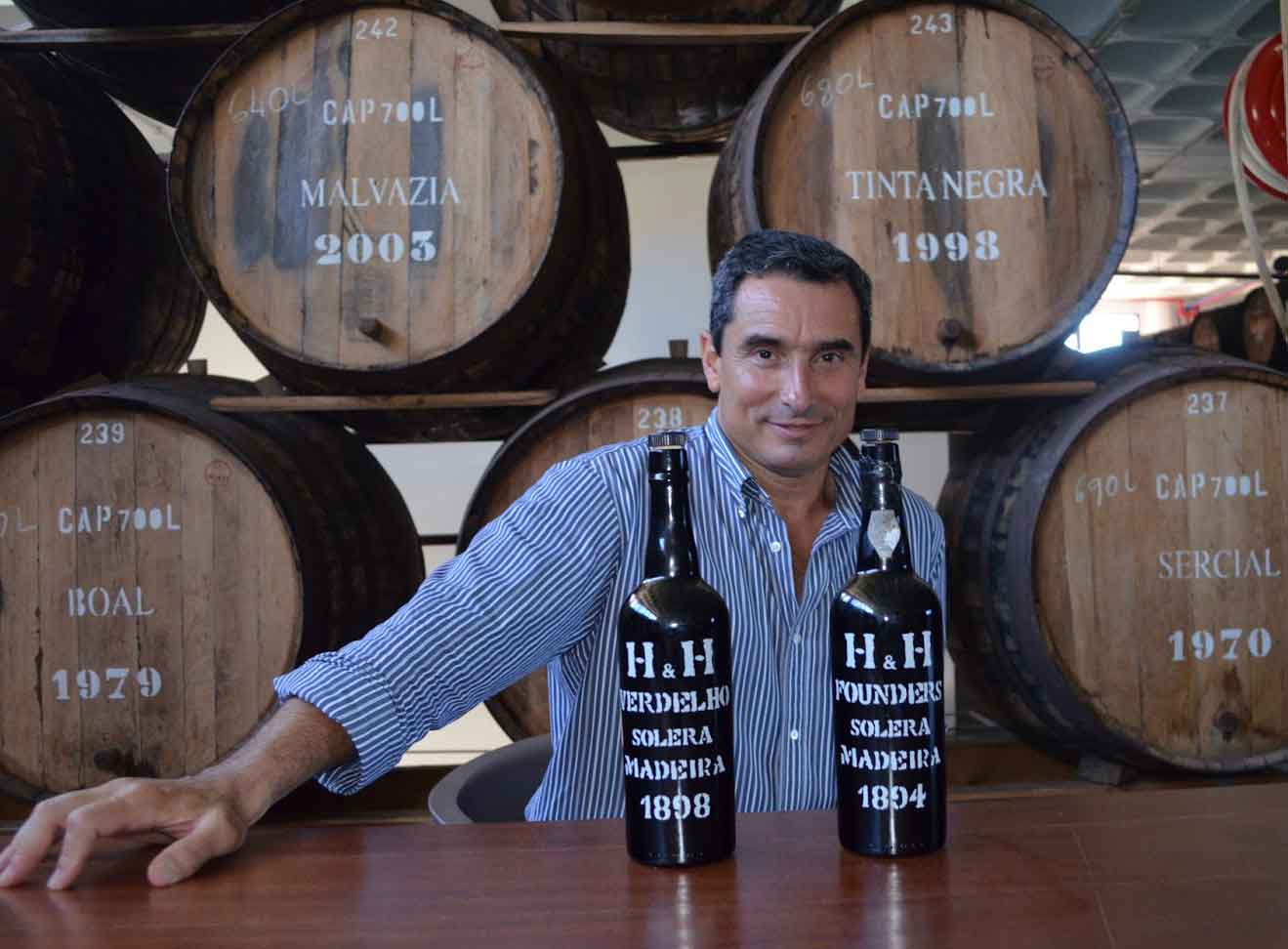H&H Malvazia Madeira 1954

|

|
About Malvasia
Known variously as Malvasia, Malvazia and Malmsey, Malvasia is historically the most celebrated of the classic grapes varieties on the island: the sweetest and most unctuous of madeiras—the stuff of legends, literature and song. Yet there are at least two, genetically distinct Malvasia now planted on the island: Malvasia Cândida and Malvasia Branca de São Jorge. Thought to have first been planted in the fifteenth century, the former is notoriously difficult to grow and now quite limited in acreage. Malvasia Branca de São Jorge was first planted during the late-1960s and early 70s; it dominates all Malvasia bottlings since that time and accounts for the large majority of Malvasia’s 37 ha currently planted on the island. In its youth, Malvasia is lighter-hued than Boal, but with elevage it darkens considerably, resulting in wines that are full-bodied and opulent, rich with flavors of toffee, molasses, caramel, coffee, quince and spice cake, yet (like all madeiras) never cloying.Tasting Notes
“As we taste the 1954 Malmsey we are reminded of the local saying about the Malvazia grape: ‘Don't eat them, don't give them away, for wine God made them.’ The wine is beginning to show a bit of rancio character, with earthy notes, exotic spices, molasses and brown sugar, backed up with a tangy fresh acidity that helps the wine retain balance; on the palate, the wine is elegant yet so thick it is almost viscous. Delicious wine.” (Charles Curtis, MW)(50-65ºF)
(55-64ºF)
(55-59ºF)
About Henriques & Henriques
 Base map data ©2017 Google
Base map data ©2017 GoogleIt might be said that the history of Henriques & Henriques is the history of Madeira itself. Legend has it that Infante Dom Henriques planted the island’s first vines in 1425. These vines gave fruit to one of the “first families of Madeira” and in the process sunk deep roots which Henriques’ descendants and successors continue to draw upon in guiding H&H today.
João Joaquim Gonçalves Henriques founded the firm in 1850 as a partidista, supplying wine to other merchants from extensive Henriques vineyard holdings while continuing to amass significant stocks of old wines in the family cellars. In 1925, Henriques & Henriques began to bottle and export Madeira produced entirely from their own vineyards—an anomaly amongst producers on the island. Today, Henriques & Henriques is led by CEO and winemaker Humberto Jardim, one of Madeira’s great visionaries and ambassadors. The firm continues to source some of its needs from its own vineyards, most notably from a terraced, 10-hectare vineyard at Quinta Grande—the single largest on island, replanted in 1995.
Against the tides of urban development, H&H have been in the forefront of vineyard planting and preservation of Madeira’s noble varieties: Sercial, Verdelho, Boal, Malvasia and Terrantez, while simultaneously playing a key role in the reappraisal of the underrated Tinta Negra, recently releasing an unprecedented 50-year expression. Likewise, H&H’s age-statement varietal wines are widely regarded as benchmark articulations: always 100% of the stated varietal (e.g., Verdelho), the blend always composed of stocks well in excess of the statement requirement (e.g., 15-year).
Finally, H&H continues to boast an impressive selection of pre-1925 “Garrafeira” (vintage) and Solera bottlings originating in the Henriques’ family cellars. Without question, the most celebrated of these is the “Heavenly Quartet”—four legendary wines from the late 18th century—that are amongst the most transcendent expressions of Madeira extant today. To taste any one of these is, quite literally, to “drink history” itself, as well as to share in the accumulated wisdom—of family, family-owned vineyards and old stocks—that continue to define Henriques & Henriques today. Full details
About Madeira DOC
The archipelago of Madeira has long profited from its position in shipping lanes, from the 1500s, when ships under sail called at Funchal to pick up food and wine before the trade winds blew their ships west to the New World, to today, when cruise ships dock and world travelers sample the foods, crafts, and wines of the island. The Madeira DOC governs the fortified and heated-to-oxidation wines of the island, regulating the grapes, minimum age, and residual sugars of each category. While the Madeira laws give producers plenty of leeway in terms of blending and age statements, Henriques & Henriques’ blending approach is crystal clear—true minimum age statements and only monovarietal wines.
Viticulture/Vinification
| Cepage | 100% Malvasia Cândida) |
|---|---|
| Terrain/Climate | mountainous; subtropical but highly varied |
| Soil Type | mixed volcanic (basalt, tufa) |
| Vine Training | latada (pergola) |
| Harvest | mid-August to early September; hand-harvested |
| Fermentation | some whole-cluster; skin maceration; fermented in lagares with native yeasts |
| Fortification | traditional agurardente de cana (70% abv) |
| Elevage | in canteiro for 38 years; bottled in 1993 |
| ABV | 20.0% |
| R.S. | 148.5 g/l |
| Total acidity | 8.6 g/l |
| Total extract | 174.8 g/l |
| SKU | Vintage | Region | Origin | Desc | Cepage | % Alc | Size/Pack | Finish | BTL Barcode | Cs Barcode | Cs Wgt |
|---|---|---|---|---|---|---|---|---|---|---|---|
| HZ 6595-1954 | 1954 | Madeira | PT | Oxidative/Oxidized Wine; Fortified | 100% Malvasia | 20.0% | 750/6 | cork | 5601196011020 | 45601196011028 | 8.50 kg |
Downloads:



